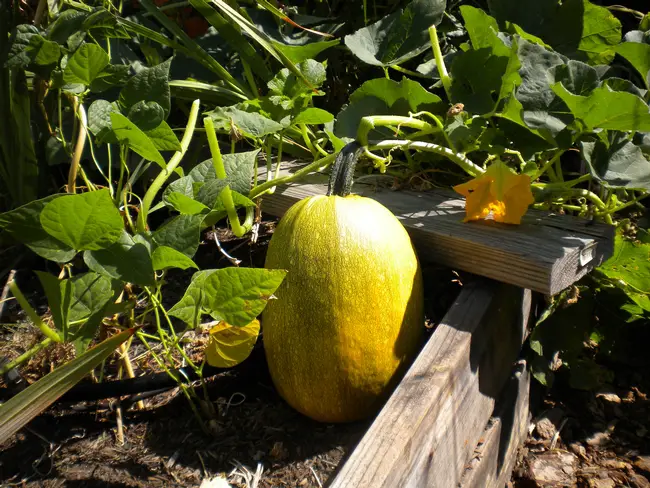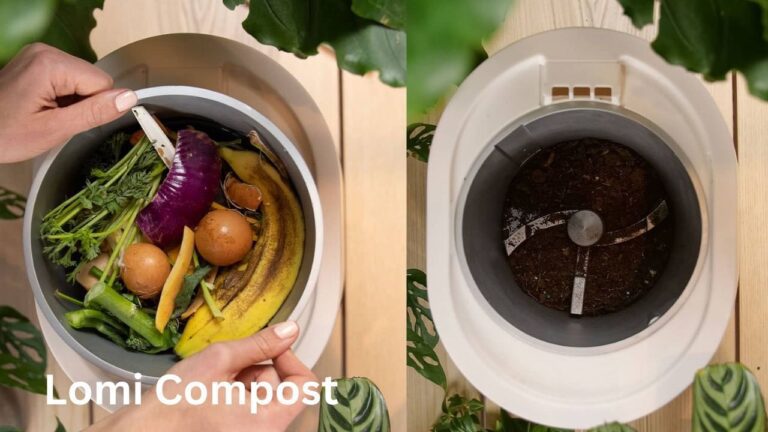Compost Worms: How to Choose the Best Ones
Table of Contents
Understanding the Importance of Compost Worms
Compost worms play a vital role in the process of decomposition and nutrient cycling. These tiny creatures, specifically the species known as red wigglers (Eisenia fetida) or tiger worms (Eisenia andrei), are incredibly efficient at breaking down organic matter and converting it into nutrient-rich humus. As they consume the decaying material, they release valuable nutrients into the soil, making them readily available for plant uptake. This symbiotic relationship between compost worms and the soil ecosystem is crucial for maintaining soil fertility and promoting healthy plant growth.
Furthermore, compost worms contribute to the overall health of the soil by enhancing its structure and nutrient-holding capacity. As they tunnel through the soil, they create channels that improve aeration and water infiltration. These channels also allow plant roots to penetrate deeper into the soil, accessing additional nutrients and moisture. Additionally, the sticky mucus secreted by compost worms helps to bind soil particles together, creating stable aggregates that improve soil structure and reduce erosion. In essence, compost worms play a key role in building and maintaining the foundation of a productive and sustainable garden or agricultural system.
Identifying the Different Types of Compost Worms
Compost worms are a crucial component of any successful composting system. They help break down organic matter, turning it into nutrient-rich compost that can be used to nourish plants and improve soil health. There are several types of compost worms that are commonly used in composting, each with its own unique characteristics and benefits.
One of the most popular types of compost worms is the Eisenia fetida, also known as the red wigglers or red earthworms. These worms are highly efficient at processing compost and can consume up to half their weight in organic matter every day. They thrive in temperatures ranging from 55-77°F (13-25°C) and prefer moist environments with ample organic waste.
Another common type of compost worm is the Lumbricus rubellus, also referred to as the redworm or brandling worm. This species is slightly larger than the red wigglers and can tolerate a wider range of temperatures, from 41-77°F (5-25°C). They are particularly effective at breaking down large pieces of organic material and are known for their ability to quickly reproduce in ideal conditions.
It’s important to note that not all earthworms are suitable for composting. While some species may be beneficial for soil health, they may not possess the specific characteristics required for efficient composting. Therefore, it is crucial to choose the right types of compost worms that are best suited for your composting needs. Understanding the different types of compost worms and their specific requirements will allow you to make an informed decision and create an optimal composting environment for these invaluable decomposers.
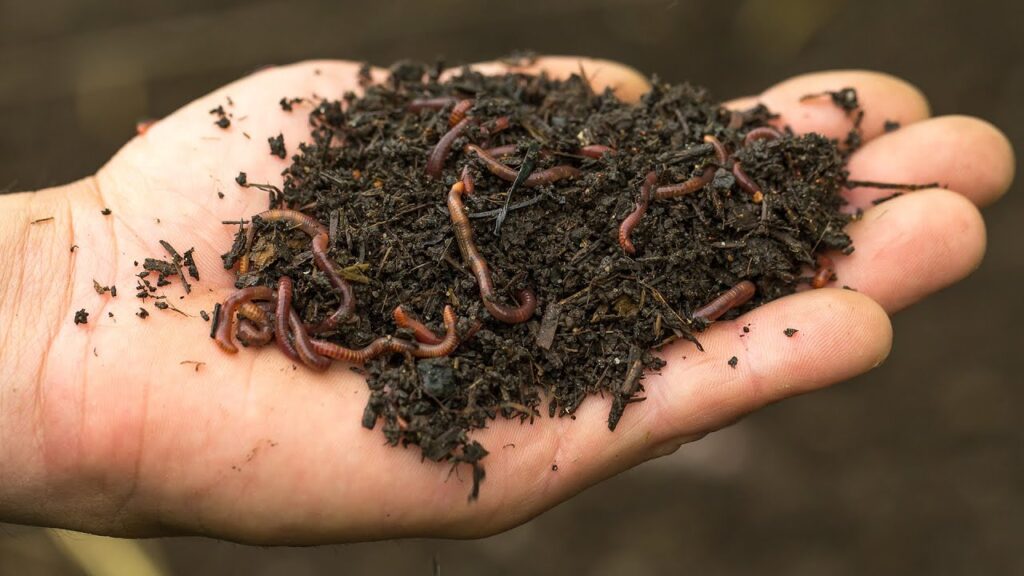
Evaluating the Ideal Habitat for Compost Worms
Compost worms are essential for successful vermicomposting, as they play a vital role in breaking down organic materials and transforming them into nutrient-rich compost. To ensure the optimal growth and reproduction of compost worms, it is crucial to create a suitable habitat that mimics their natural environment.
One of the key factors to consider when evaluating the ideal habitat for compost worms is the bedding material. Worms thrive in moist environments, so using materials like shredded newspaper, coconut coir, or leaf litter can help maintain the necessary moisture levels. It is important to avoid using glossy, colored, or heavily-inked paper, as these may contain toxic substances harmful to the worms.
In addition to the bedding material, the temperature of the worm habitat is another critical factor. Compost worms prefer temperatures between 55°F and 77°F (13°C and 25°C). If the temperature falls outside this range, the worms may become less active or even die. Ensuring the composting system is placed in a sheltered area or insulating it during extreme weather conditions can help maintain a suitable temperature for the worms.
Another aspect to consider is ventilation. Like any living organism, compost worms require oxygen to survive. Proper ventilation helps maintain the right balance of moisture and oxygen in the worm bin. This can be achieved by drilling small holes in the bin or using a perforated base. Adequate aeration promotes the growth of beneficial bacteria, which play a crucial role in breaking down organic matter and supporting the worms’ digestive process.
Lastly, it is important to provide the worms with a dark and undisturbed environment. Worms are sensitive to light and prefer to dwell in dark places. Covering the bin with a thick layer of damp newspaper or a suitable lid will help create the darkness they seek. It is essential to minimize disturbances to the habitat, as excessive agitation can cause stress to the worms and disrupt their feeding and reproduction habits.
By carefully evaluating and creating the ideal habitat for compost worms, gardeners can ensure the growth and productivity of these beneficial creatures. Providing the right bedding material, maintaining suitable temperatures, ensuring proper ventilation, and creating a dark and undisturbed environment will support the optimal functioning of compost worms in the vermicomposting process.
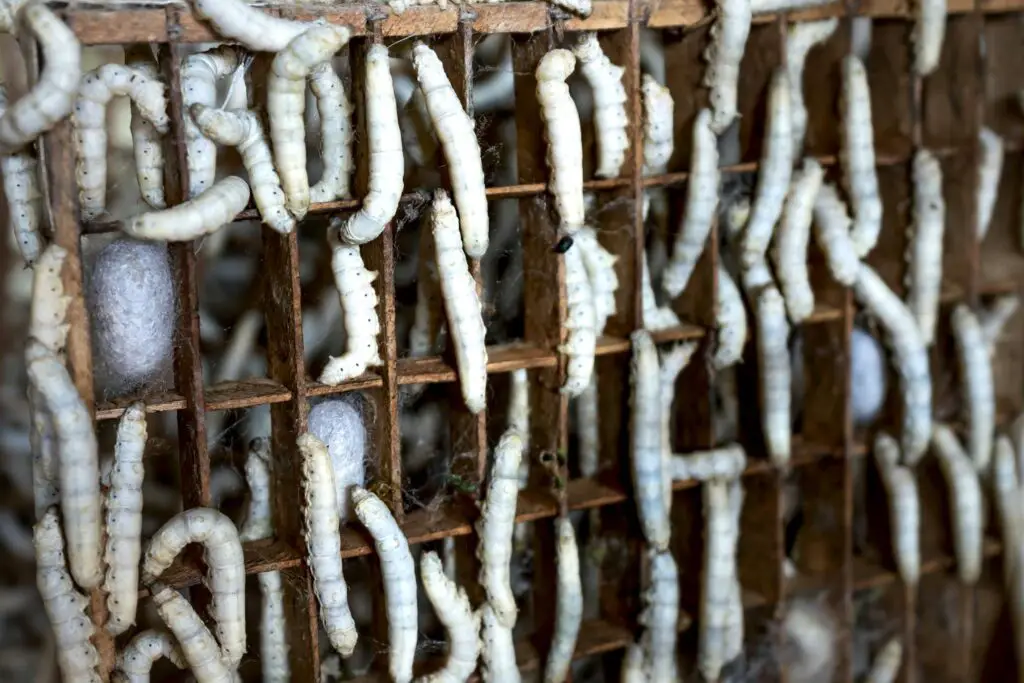
Examining the Benefits of Composting with Worms
Composting with worms, also known as vermicomposting, offers a multitude of benefits for both the environment and gardeners. One of the key advantages is that it helps divert organic waste from landfills, reducing methane emissions and contributing to a more sustainable future. In fact, studies have shown that vermicomposting can reduce waste volume by up to 75%. By harnessing the power of compost worms, gardeners can play an active role in minimizing their ecological footprint.
Furthermore, composting with worms yields nutrient-rich vermicompost, which enhances soil health and fertility. Vermicompost is often referred to as “black gold” by gardeners, and for good reason. It contains higher levels of essential nutrients, beneficial microbes, and enzymes, compared to traditional organic compost. These nutrients act as natural fertilizers, promoting vigorous plant growth, increasing crop yields, and enhancing overall soil structure. Additionally, vermicompost has been found to improve water retention properties in soil, reducing the need for excessive irrigation and conserving water resources. As gardeners, we can reap the rewards of healthy, productive gardens while reducing reliance on synthetic fertilizers and harmful chemicals.
| Benefits of Vermicomposting | Description |
|---|---|
| 1. Nutrient-Rich Soil | Vermicompost produced by worms is rich in essential nutrients such as nitrogen, phosphorus, potassium, and micronutrients beneficial for plant growth. |
| 2. Organic Waste Reduction | Reduces organic waste sent to landfills by converting kitchen scraps, paper waste, and yard debris into nutrient-rich compost. |
| 3. Sustainable Soil Amendment | Improves soil structure, aeration, and water retention, promoting healthier plant growth without the need for chemical fertilizers. |
| 4. Environmental Sustainability | Vermicomposting is an eco-friendly practice that reduces greenhouse gas emissions associated with organic waste decomposition in landfills. |
| 5. Low Maintenance | Requires minimal maintenance and setup compared to traditional composting methods, making it suitable for households and small-scale operations. |
| 6. Year-Round Composting | Worms can be kept indoors, allowing composting to occur year-round regardless of weather conditions, providing a consistent supply of compost. |
| 7. Cost-Effective | Cost-effective method for producing high-quality compost, reducing the need for purchasing commercial fertilizers and soil amendments. |
| 8. Educational Opportunities | Provides educational opportunities for understanding the natural processes of decomposition, soil health, and the role of worms in ecosystems. |
Assessing the Nutritional Requirements of Compost Worms
Compost worms, also known as red wigglers or Eisenia fetida, have specific nutritional requirements that must be met in order to maintain their health and promote optimal composting performance. These worms are not picky eaters and can consume a wide range of organic materials. However, their diet should consist primarily of high-carbon materials such as fruit and vegetable scraps, shredded paper, cardboard, and coffee grounds. These materials provide them with essential carbon for energy and support the growth of beneficial microorganisms in their gut.
In addition to carbon-rich materials, compost worms also require nitrogen-rich sources, such as grass clippings, legume plants, and manure, to maintain a balanced diet. Nitrogen is crucial for their growth, reproduction, and overall well-being. It’s important to note that excessive nitrogen can lead to an imbalance in the composting process, resulting in odors and other undesirable conditions. Therefore, it is essential to monitor the nitrogen content in their diet and ensure a proper balance to create healthy and productive compost. By providing a diverse range of organic materials, gardeners can meet the nutritional needs of compost worms and create a thriving composting system.
Considering the Size and Quantity of Compost Worms
Compost worms come in different sizes, and the size of the worms you choose for your composting system will depend on various factors. One important consideration is the amount of organic waste you generate. Larger worm species, such as the African Nightcrawler (Eudrilus eugeniae) or the European Nightcrawler (Eisenia hortensis), can consume a larger quantity of organic matter compared to smaller worm species. If you generate a significant amount of kitchen scraps or have a larger composting setup, these larger worm species may be more suitable for your needs.
On the other hand, if you have a smaller composting system or generate a moderate amount of organic waste, smaller worm species like the Red Wiggler (Eisenia fetida) or the Tiger Worm (Eisenia andrei) may be sufficient. These smaller worms are known for their high reproductive capacity and voracious appetite, allowing them to efficiently process smaller quantities of organic waste.
In terms of quantity, a general guideline is to start with approximately one pound (450 grams) of worms per square foot of composting area. However, this can vary depending on the specific conditions and requirements of your composting system. It’s important to ensure that you have enough worms to efficiently break down the organic matter, but also not to overcrowd the system, as this can lead to competition for resources and potential stress for the worms. It’s a delicate balance that may require some experimentation and adjustment based on your specific circumstances.
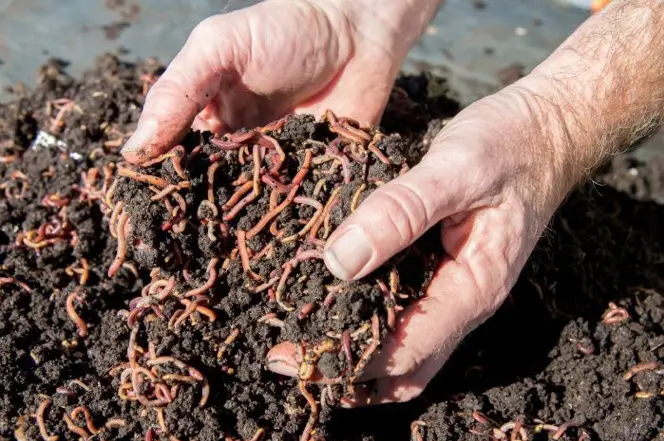
Exploring the Lifespan and Reproduction of Compost Worms
Compost worms, also known as red wigglers or Eisenia fetida, have a relatively short lifespan compared to other organisms. On average, these worms live for about 1 to 2 years. However, their reproductive capabilities are truly remarkable, compensating for their shorter lifespan. Compost worms are hermaphrodites, meaning they possess both male and female reproductive organs. This characteristic allows them to reproduce rapidly and efficiently.
When it comes to reproduction, compost worms engage in a process known as cocoon production. After mating, which involves the exchange of sperm between two worms, a small, lemon-shaped cocoon is formed within the worm’s body. Each cocoon contains multiple fertilized eggs, typically numbering around 2 to 20. These cocoons are then deposited in the organic matter of the worm’s environment, such as in compost, soil, or worm bedding. Under favorable conditions, such as adequate moisture and temperature, these cocoons will hatch within 2 to 3 weeks, giving rise to new generations of compost worms.
The reproductive capacity of compost worms is truly remarkable. Under optimal conditions, a single worm can produce anywhere from 2 to 4 cocoons per week, with each cocoon capable of containing multiple eggs. This rapid rate of reproduction allows compost worm populations to multiply quickly, making them highly effective in the composting process. Additionally, the hatching of these cocoons allows for a continuous cycle of new worms, ensuring the sustainability of the composting ecosystem.
Understanding the lifespan and reproduction of compost worms is crucial for successful vermicomposting endeavors. By providing suitable conditions for their reproductive activities, gardeners can maintain a thriving population of worms and promote efficient decomposition of organic waste. Moreover, it is fascinating to witness the life cycle of these remarkable creatures, from the formation of cocoons to the emergence of new generations, all contributing to the natural recycling process that benefits the overall health of the ecosystem.
| Aspect | Description |
|---|---|
| Lifespan | Compost worms, such as Eisenia fetida (red wigglers), typically live for around 1.5 to 2 years under ideal conditions. However, their lifespan can vary based on factors like environmental conditions and care. |
| Reproduction | Compost worms are hermaphrodites, meaning they have both male and female reproductive organs. They reproduce through a process called copulation, where they exchange sperm with another worm. Each worm can produce several cocoons (egg capsules) per week under optimal conditions. These cocoons contain multiple embryos and can hatch within a few weeks, depending on environmental factors such as temperature and moisture levels. |
Analyzing the Environmental Conditions for Compost Worms
Analyzing the Environmental Conditions for Compost Worms
Compost worms, also known as red worms or Eisenia fetida, are highly adaptable creatures that thrive in specific environmental conditions. To ensure the success of your composting efforts, it is crucial to create the ideal habitat for these beneficial organisms.
First and foremost, compost worms require a stable temperature range to flourish. Ideally, the temperature should be between 55 to 77 degrees Fahrenheit (12 to 25 degrees Celsius) as extreme heat or cold can be detrimental to their health. Additionally, these worms prefer a moist environment, so maintaining a moisture content of around 75% is essential. Regularly monitoring and adjusting the moisture level by misting the bedding with water or adding dry bedding materials can help maintain the optimal conditions.
Moreover, the pH level of the worm bin plays a crucial role in their survival and productivity. Compost worms thrive in slightly acidic to neutral conditions, with an ideal pH range of 6.5 to 7. They struggle to survive in highly acidic or alkaline environments, so it is vital to regularly test the pH level and make necessary adjustments using organic amendments if needed.
Creating a suitable home for compost worms also involves considering the bedding materials. A combination of carbon-rich materials, such as shredded cardboard, newspaper, or dried leaves, and nitrogen-rich materials, such as vegetable scraps or coffee grounds, provides the perfect balance for their diet and bedding. It is important to avoid using chemical-laden materials or materials treated with pesticides, as these can harm the worms and affect the compost’s quality.
By carefully analyzing and maintaining the environmental conditions outlined above, you can create an optimal habitat for compost worms, ensuring their health and productivity. Harnessing their remarkable capabilities, compost worms can play a crucial role in transforming organic waste into nutrient-rich compost, benefiting both your garden and the environment.
Selecting the Best Composting System for Worms
Selecting the best composting system for worms is a crucial step in ensuring successful and efficient composting. There are several factors to consider when making this decision.
Firstly, it is important to assess the available space for the composting system. Worms require a suitable environment that provides enough space for them to thrive and reproduce. Depending on the quantity of compost you plan to produce, you may need a larger or smaller system. Consider factors such as the size of your garden or the amount of organic waste you generate.
Secondly, the type of composting system also plays a significant role in selecting the best option for worms. Popular options include worm bins, vermicomposting bags, and worm towers. Each system has its advantages and disadvantages, so it is essential to evaluate what suits your specific needs and preferences. Factors like ease of use, maintenance requirements, and the overall functionality of the system should be considered.
By carefully considering these factors, you can choose the best composting system for worms that will not only meet your composting goals but also provide a suitable and conducive environment for the worms to thrive. Taking the time to make an informed decision will ensure that your composting efforts are successful and contribute to a healthier and more sustainable garden.
Comparing the Different Breeds of Compost Worms
When it comes to composting with worms, there are various breeds of compost worms to choose from. Each breed has its own unique characteristics and preferences, making it important for gardeners to understand the differences and select the breed that best suits their specific needs.
One popular breed of compost worm is the Eisenia fetida, commonly known as the Red Wiggler worm. These worms are highly efficient in breaking down organic matter and have a voracious appetite. They thrive in a wide range of temperatures and can tolerate fluctuations in moisture levels. Red Wigglers are also known for their ability to reproduce quickly, making them an ideal choice for gardeners seeking a self-sustaining worm population.
Another widely used breed is the Eisenia hortensis, also referred to as the European Nightcrawler. These worms are larger than Red Wigglers and have a higher tolerance for colder temperatures. They are excellent for breaking down coarse materials such as leaves and straw, making them a great choice for gardeners with a large amount of organic waste to compost.
While Red Wigglers and European Nightcrawlers are the most commonly used compost worms, there are other breeds available as well, such as the African Nightcrawler (Eudrilus eugeniae) and the Indian Blue worm (Perionyx excavatus). Each breed has its own unique characteristics and advantages, so it is essential to research and assess which breed aligns best with your composting goals.
Understanding the Role of Compost Worms in Soil Health
Compost worms play a crucial role in promoting soil health and fertility. Their presence in the soil helps to break down organic matter, such as decaying plant material or kitchen scraps, into nutrient-rich compost. As they move through the soil, compost worms ingest these organic materials, digest them, and subsequently release nutrient-rich castings, or worm manure, into the surrounding soil.
The castings produced by compost worms are highly beneficial for soil health. They contain a plethora of essential nutrients, including nitrogen, phosphorus, and potassium, as well as trace elements like calcium, magnesium, and iron. These nutrients are in a form that is readily available to plants, making the soil more fertile and conducive to healthy plant growth. Additionally, the castings improve the soil structure by increasing its water-holding capacity and enhancing its ability to retain nutrients. This, in turn, helps to reduce leaching, prevent erosion, and promote overall soil health.
Not only do compost worms contribute to improving soil fertility and structure, but they also play a vital role in enhancing soil microbial activity. Their constant movement and feeding activities aerate the soil, creating channels for air and water to penetrate into the soil profile. This aeration promotes a healthy environment for beneficial soil organisms, such as bacteria, fungi, and other microorganisms, which are essential for breaking down organic matter and cycling nutrients within the soil ecosystem. Moreover, the presence of compost worms helps to control populations of pests, such as harmful insects or larvae, by predation or competition, leading to a natural balance in the soil ecosystem.
Understanding the pivotal role of compost worms in soil health is imperative for gardeners and agricultural enthusiasts. By harnessing the power of these little wonders, one can ensure that their soil remains rich in nutrients, well-structured, and teeming with beneficial microbial life. Whether you have a backyard garden or a large-scale agricultural operation, incorporating compost worms into your soil management practices can have a profound impact on plant growth, crop productivity, and sustainable farming. With a clear understanding of the role played by compost worms in soil health, gardeners and farmers can make informed decisions and adopt practices that maximize the benefits of these incredible creatures.
Evaluating the Quality of Compost Produced by Worms
Compost produced by worms, also known as vermicompost, is a highly valuable organic fertilizer that can greatly enhance the health and productivity of plants. Evaluating the quality of compost produced by worms is crucial to ensure its effectiveness in providing nutrients to plants and improving soil fertility.
One of the key factors to evaluate the quality of vermicompost is its nutrient content. The presence of essential nutrients such as nitrogen, phosphorus, and potassium is essential for promoting healthy plant growth. A comprehensive analysis that includes macro and micronutrients can provide valuable insights into the nutrient composition of the vermicompost. Additionally, assessing the pH level of the compost is important, as it affects nutrient availability to plants. Ideally, vermicompost should have a neutral to slightly acidic pH to ensure optimal nutrient uptake.
Another aspect to consider when evaluating the quality of compost produced by worms is its maturity. Mature vermicompost is typically characterized by a dark and crumbly texture, indicating that it has undergone sufficient decomposition. This ensures that the organic matter has been broken down into forms that are readily available for plant uptake. Furthermore, mature vermicompost tends to have a pleasant earthy smell, indicating the absence of any unwanted odors or harmful compounds. Regular visual and olfactory assessments can assist in determining the maturity level of the vermicompost.
In conclusion, assessing the nutrient content and maturity of vermicompost are essential steps in evaluating its quality. By ensuring that the compost is rich in essential nutrients and has undergone proper decomposition, gardeners can confidently utilize it as a valuable tool for promoting plant growth and soil health.
Avoiding Common Mistakes in Choosing Compost Worms
Choosing the right compost worms is crucial for the success of your composting efforts. However, many gardening enthusiasts make common mistakes that can hinder the effectiveness of their composting system. By avoiding these mistakes, you can ensure that your compost worms thrive and produce high-quality compost for your garden.
One common mistake is not selecting the appropriate worm species for your composting needs. Different worm species have different preferences and abilities when it comes to composting. For example, Eisenia fetida, also known as red wigglers, are popular for their efficiency in breaking down organic matter. On the other hand, Lumbricus terrestris, or nightcrawlers, are better suited for deep soil burrowing than composting. By understanding the characteristics of different compost worm species, you can make an informed decision and choose the most suitable worms for your specific composting goals.
Another common mistake is neglecting to consider the quantity of worms needed for your composting system. It’s important to have a sufficient number of worms to efficiently break down the organic material in your compost pile. As a general guideline, you’ll need approximately one pound of worms for every square foot of composting space. Underestimating the quantity of worms can result in slower decomposition, while overestimating can lead to overcrowding and competition for resources. By carefully calculating the appropriate quantity of worms based on the size of your composting system, you can ensure a healthy and productive worm population.
Remember, avoiding these common mistakes in choosing compost worms will set you on the path to successful composting. By selecting the right worm species and ensuring the appropriate quantity, you can create an optimal environment for your worms to thrive and produce nutrient-rich compost for your garden.
• Select the appropriate worm species for your composting needs
• Understand the characteristics of different compost worm species
• Choose worms that are efficient in breaking down organic matter, such as red wigglers (Eisenia fetida)
• Consider using nightcrawlers (Lumbricus terrestris) for deep soil burrowing instead of composting
• Neglecting to consider the quantity of worms needed can hinder decomposition process
• Aim for approximately one pound of worms per square foot of composting space
• Underestimating the quantity can result in slower decomposition
• Overestimating can lead to overcrowding and competition for resources
• Calculate the appropriate quantity based on the size of your composting system
Finding Reliable Sources for Purchasing Compost Worms
When it comes to purchasing compost worms for your gardening needs, finding reliable sources is crucial. Ensuring that you obtain healthy and productive worms is essential for a successful composting journey. With a plethora of options available, it can be overwhelming to choose the right source.
One of the most reliable sources for purchasing compost worms is reputable worm breeders and suppliers. These professionals have the knowledge and expertise to breed and maintain high-quality worms. They often offer a variety of worm species suitable for composting, such as Eisenia fetida (red wigglers) or Lumbricus rubellus (redworms). Additionally, they can provide you with guidance on worm care and answer any questions you may have. Another way to find reliable sources is through local gardening associations or online marketplaces dedicated to organic gardening products. These platforms often vet their sellers, ensuring you have access to trustworthy suppliers. Prioritize those with positive reviews and a good reputation for delivering healthy and active worms.
Caring for and Maintaining Compost Worms for Optimal Results
Caring for and maintaining compost worms is essential for achieving optimal results in your composting efforts. These organisms play a crucial role in breaking down organic matter, enriching the soil, and promoting the growth of healthy plants. To ensure the well-being of your compost worms, a few key factors need to be carefully considered.
First and foremost, it is important to provide a suitable environment for your compost worms. This includes providing them with the right bedding material, such as shredded newspaper, coconut coir, or leaf litter. The bedding should be moist but not soggy, as excessive moisture can lead to oxygen deprivation and the development of harmful bacteria. Additionally, maintain a suitable temperature range between 55 to 77 degrees Fahrenheit (12 to 25 degrees Celsius) to ensure optimum activity and reproduction of the worms.
Secondly, proper feeding is crucial for the health and productivity of your compost worms. These incredible creatures thrive on a diet of organic waste, such as fruit and vegetable scraps, coffee grounds, tea leaves, and eggshells. It is important to avoid feeding them meat, dairy products, oily or salty foods, as these can attract pests and harm the worms. To prevent any potential odor or fly problems, bury the food waste under the bedding and avoid overfeeding the worms. By providing a balanced diet and maintaining a favorable living condition, you can ensure that your compost worms will continue to thrive and produce nutrient-rich vermicompost for your gardening needs.
How often do compost worms need to be fed?
Compost worms should be fed about once a week or when their food supply has been fully consumed.
Can I use any type of food scraps for compost worms?
Yes, compost worms can consume a variety of food scraps such as fruit and vegetable peelings, coffee grounds, tea bags, and crushed eggshells.
What should I avoid feeding compost worms?
It is best to avoid feeding compost worms meat, dairy products, oily foods, citrus fruits, and anything that has been cooked with oil or spices.
How do I maintain the moisture level in the worm bin?
You can maintain the moisture level in the worm bin by regularly misting the bedding with water. It should be moist, but not soggy.
How long does it take for compost worms to reproduce?
Compost worms can start reproducing within a few weeks to a few months, depending on the environmental conditions and the number of worms in the bin.
Can compost worms survive outside in cold temperatures?
Compost worms are sensitive to extreme temperatures and may not survive in very cold conditions. It is recommended to provide insulation or move the worm bin indoors during winter.
How do compost worms benefit soil health?
Compost worms help improve soil health by breaking down organic matter, releasing valuable nutrients, and enhancing soil structure and moisture retention.
How long does it take for compost worms to produce usable compost?
Compost worms can transform food scraps and bedding into nutrient-rich compost in approximately 2-6 months, depending on the conditions and the size of the worm population.
Where can I purchase compost worms?
You can purchase compost worms from reputable online suppliers, local gardening stores, or through worm farming communities and enthusiasts.
How often should I check on my compost worms?
It is recommended to check on your compost worms every few days to ensure the bedding is moist, there are no foul odors, and the worms are healthy and active.

Ankit Garg is a seasoned writer at South El Monte Hydroponics, blending his passion for agriculture with a penchant for storytelling. With a degree in Agricultural Sciences from a prestigious institution, Ankit’s expertise lies in hydroponics, sustainable farming, and innovative cultivation techniques. His keen interest in exploring the intersection of technology and agriculture has led him to delve deep into the realm of hydroponic farming, where he thrives in uncovering the latest advancements and sharing insights through his engaging prose. Ankit’s dedication to promoting eco-friendly and efficient farming practices through his writing has earned him recognition within the agricultural community and beyond.





